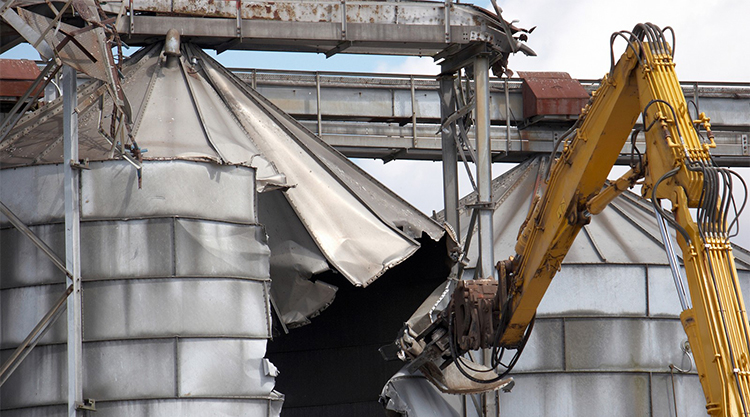Smashing functional silos has become a rallying cry in management circles, especially during the past decade. The pain points behind this leadership imperative go back nearly 30 years, when Phil Ensor coined the phrase “functional silo syndrome” to describe common challenges in manufacturing organizations. Since then, the crippling effects of workplace silos have worsened, magnified by the disruptive effects of technology, yet many companies are no closer to overcoming these organizational difficulties.
Functional Silos and Symptoms
Typically, organizational leaders start looking for ways to break down silos because they’re experiencing one—and usually more—of the following five problems.
Restructuring: The Default Solution
The dysfunction associated with functional silos boils down to competing priorities and lack of cross-functional cooperation. The kneejerk reaction is to restructure reporting relationships in a way that encourages greater collaboration among teams and their members, such as centralizing support functions. Unfortunately, reorganization doesn’t correct these problems. This tactic inevitably aggravates the situation by breaking up teams that previously worked together and rearranging them into new silos.
The post-restructure organization suffers from the same issues as before:
- Vertical silos that focus on their limited function, not on the overall success of the company
- Accountability systems that prioritize functional priorities over cross-functional ones
- Interdepartmental warfare as the new divisions compete among themselves
Plus, new complications have been added to the mix:
- Increased employee stress as team members learn their new roles and responsibilities
- Competition over resources as leaders fight for access to team members who no longer report to them
Functional silos do create significant roadblocks in organizations over a certain size, but the silos themselves aren’t the problem. Instead, the problems associated with silos come from an outdated management system, the underlying rules that govern how those functions operate.
An Obsolete System
With the recent release of iOS 11, many people with older iPhones have experienced sluggish performance, even when opening basic apps. This phenomenon results from developers updating apps to incorporate new operating system features, which take advantage of technology updates. Users can choose not to upgrade their iOS, but they’ll gradually lose functionality as app developers stop supporting older platforms.
A typical restructure is the equivalent of trying to run the latest and greatest apps without updating the operating system. While the new teams and divisions are designed to meet modern business challenges, the underlying management operating system addresses the challenges of the Industrial Revolution.
Needless to say, today’s international economy bears no resemblance to the business landscape of the early 20th century. Even manufacturing companies—for which the current operating system was designed—have outgrown these limited rules that prize functional efficiency above all else. The complexities of managing a global economy across multiple regions and product/service lines, compounded by the disruptive effects of technology, require flexibility and collaboration.
In short, modern businesses need a new operating system.
Prepare to Upgrade
Recognizing the need for an operating system upgrade is a crucial first step. That realization opens doors for organizational transformation.
Analyze the Horizontal Dimension
Functional silos aren’t an intrinsic problem; after all, these groups provide specialized expertise. The challenges arise when an organization doesn’t have a system for integrating these functions. An organizational chart represents the vertical dimension of a company: who does what and the hierarchical relationships of each player. Mapping the horizontal dimension allows a company to track all the players and processes involved with generating products and services and delivering them to customers. Studying these throughputs enables leadership to identify bottlenecks and inefficiencies and, more importantly, to correct these problems.
Create Cross-Functional Teams and Support Systems
Because these horizontal processes encompass multiple functions, managing them requires collaboration among these specialized groups. Bring together representatives from the relevant functions, and identify clear roles and responsibilities within the team. These cross-functional groups will drive horizontal integration. To promote collaboration instead of competition, organizations need to create incentives that reward these blended teams for achieving joint deliverables and metrics. Updating the accountability system to emphasize overall company performance and the collective team performance encourages team members to act on behalf of the larger organization—not solely on their own individual needs.
Provide Project Management Training
Since initiatives, or projects, drive strategy execution, they fall in the horizontal dimension. Educating cross-functional teams in collaborative leadership and planning provides them with new rules and tools to support a modern operating system. Employees learn how to make decisions in a collaborative environment, where all participants—not an outspoken few—provide ideas for discussion and evaluation. Documenting the process helps secure support by demonstrating how the team arrived at the recommended course of action as the best option for the organization as a whole. Effective training moves beyond initial planning to include individual and team accountability and commitment, empowering employees to own and fulfill their responsibilities according to a realistic, agreed-upon schedule.
Functional silos developed as a natural consequence of early management systems. These specialized teams still have their place in modern organizations, but only when the underlying operating system promotes collaboration over competition.


